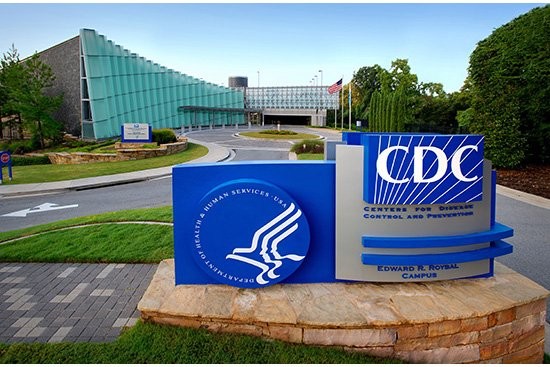David J. Sencer CDC Museum
Introduction
Text-to-speech Audio
“The David J. Sencer CDC Museum features award-winning permanent and changing exhibitions and guided tours that focus on a variety of public health topics, as well as the history of the Centers for Disease Control and Prevention” (1), a government health protection agency. Erected in 1996 as part of the CDC’s 50th anniversary, it’s currently based in Atlanta, Georgia. It is also in association with the highly-esteemed national Smithsonian Institution of Washington D. C. “It’s mission is to educate visitors about the value of prevention-based public health, while collecting, preserving, and presenting CDC’s rich heritage and vast accomplishments through engaging museum exhibitions, dynamic educational programming, and web archives” (1). As well as being free to all visitors, the museum is the only section of the CDC open to the public.
Images

This is the entrance to the Centers for Disease Control and Prevention campus, where the David J. Sencer CDC museum is located. Source: http://www.georgiahealthnews.com/2017/01/era-trump-big-impact-cdc-georgia/

Backstory and Context
Text-to-speech Audio
The Centers for Disease Control and Prevention today is America’s leading institution in protecting citizens against health threats from both the home front and abroad. However, the CDC was not always such as important and central to the health of the public, and wasn’t even referred to with the same name as it is today. In the beginning, it was called the Malaria Control in War Areas (MCWA), aptly named for its designation as a program to limit the spread of malaria in the South Pacific during the battles of WW2 against Japan. Before the MWCA’s establishment, 24,000 of the 75,000 American and allied troops sent to war in the tropical jungles became infected with the Plasmodium Protozoa that causes the malarial disease (2). Ultimately, the MWCA utilized the massive application of DDT insecticide to all United States military bases in the region with effective results. Post-war in the year of 1946, malaria was on the track to becoming a non-existent threat on domestic land, so the organization proposed changing the designated name to the Communicable Disease Center and expanding their scope of focus as a center for the control and prevention of disease. As such, it was finally renamed in 1980 the Center for Disease Control and Prevention.
The present-day structure of the CDC involves many different components. The Office of the Director is directly responsible for the management and direction of the various coordinating centers that makeup the CDC. Furthermore, it coordinates and assesses all areas of the agency as an administrative element. The numerous coordinating centers overseen of the CDC include: Environmental Health and Injury Prevention, Health Information and Services, Health Promotion, Infectious Diseases, and Occupational Safety and Health (3). Historically, the CDC has accomplished many great feats as a national government health organization. They have combatted numerous rampant public diseases, like polio, smallpox and measles. AIDS was clinically diagnosed and the influenza vaccines improved. Smoking, child abuse and depression was aggressively targeted as factors detrimental to the health of the public. They handled the anthrax bioterrorism cases, identified and successfully dealt with the H1N1 influenza pandemic. More recent epidemics such as the domestic Ebola cases in 2014 and the fungal meningitis outbreak in 2012 were almost entirely handled by the CDC as well (2).
As an extension of the CDC, the detailed strategic objectives of the David J. Sencer CDC museum currently include supporting CDC’s objective of preventing disease, injuries, and disabilities, promoting healthier lifestyle practices and educating citizens on its importance thereof, as well as informing students and families about the epidemiology of public health and encourage their future participation in careers that encompass the topic of public health. Additionally, the museum serves as CDC’s connection to its citizens, being the only part of the organization accessible to the public, “serving as CDC’s public face to promote the past, present, and future work of the agency” (1). In doing so, the museum “preserves CDC’s rich heritage through a collection of historic materials reflecting the art, history, and science of CDC” (1), with thousands of items to be seen on display.
Sources
1. “David J. Sencer CDC Museum: In Association with the Smithsonian Institution.” Centers for Disease Control and Prevention, Centers for Disease Control and Prevention, 29 June 2017, www.cdc.gov/museum/#.
2. Mahmood, Ahmed. “From Humble Beginnings: The History of the CDC.” Premedmag.org, 3 Mar. 2015, www.premedmag.org/2015/03/03/from-humble-beginnings-the-history-of-the-cdc/.
3. “Centers for Disease Control and Prevention.” Centers for Disease Control and Prevention - New World Encyclopedia, www.newworldencyclopedia.org/entry/Centers_for_Disease_Control_and_Prevention.
